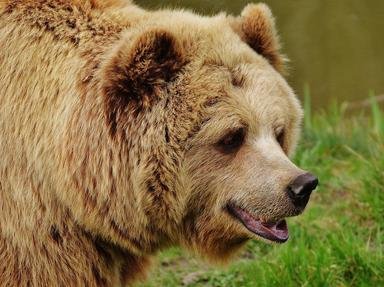Quiz Answer Key and Fun Facts
1. Ailuropoda melanoleuca was adopted as the emblem of the newly founded World Wildlife Fund in 1961. It is one of the most distinctive bears in the world, but also one of the most endangered. By what name is it most commonly known?
2. The Andean bear is the only bear that is native to the continent of South America. It has very distinctive pale brown markings on its face that clearly provided the inspiration for which other common name of this creature?
3. If a sun bear were to take a trip to A.A. Milne's Hundred Acre Wood it would probably get on very well with Winnie the Pooh, as both have a marked preference for a particular type of sweet food. As a result the sun bear is often known by what (potentially misleading) name?
4. An omnivorous bear with an elongated, hairless snout, native to central Asia, shares its name with a very slow animal often found hanging around in trees in South America. What is it called?
5. Ursus thibetanus, an arboreal bear found in areas including the Himalayas, Russia and Japan is also called a moon bear or white-chested bear due to a large patch of white fur in the centre of its chest. By what other common name is it known?
6. The polar bear is one of the most beautiful and iconic species of bear, as well as being one of the largest and most powerful. In the wild it is normally found in Arctic regions of five different sovereign nations; the US, Canada, Norway and Russia are four of them, but what is the fifth?
7. One of the largest bears in the world also has the one of the most variable appearances, as different bears have varying shades of fur colour from blonde to dark brown. It is native to a small archipelago off the Alaskan coast and sounds like it should make quite a good photographer. Can you identify it?
8. The glacier bear is a subspecies of American black bear, native to Alaska, but doesn't actually have predominantly black fur. Which of these descriptions best fits the glacier bear?
9. An Old Time Radio programme, which was broadcast daily between Thanksgiving and Christmas each year, shares its name with a member of a subspecies of American black bear. What is the common name of this bear?
10. Ursus arctos arctos is the Latin name for a relatively common type of bear, generally found in mountainous or forested areas. However, specimens from hundreds of years ago may well have found themselves inside a Roman arena being forced to fight other bears, lions or even gladiators. What is the common name for this species?
Source: Author
Fifiona81
This quiz was reviewed by FunTrivia editor
Tizzabelle before going online.
Any errors found in FunTrivia content are routinely corrected through our feedback system.

